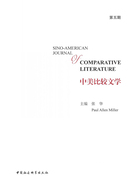
II. The Dominance: Hollywood Golden Years in China: l927-1949
The year 1927 was significant for Hollywood and China in different ways. For Hollywood, it was the beginning of its golden age. For China, it was the first serious clash between the Nationalists and Communists, a clash that was to split the country for the rest of the century. While the Chinese were busy making wars against each other, Hollywood was busy making films for the world, including China. Before long, Hollywood dominated the global market. The average percentage of Hollywood films on the international market was 75% and in China was between 85% and 90%. In 1936, for example, China imported 367 foreign films, of which 328 were made by Hollywood.
The transition from silent to sound film was completed. While old comedians like Chaplin could still cheer Chinese up, new tragediennes like Greta Garbo had already begun to soften Chinese hearts. Rather than hampering the advance of Hollywood, the Depression boosted it, driving millions to cinemas to temporarily forget their worries. During this phase Hollywood gained the name of “dream factory.” Escapism—some modern puritans may also call it “plebeianism”—served its purpose, both for Americans during the Depression and for Chinese during the war. If, in the previous phase, China was Hollywood’s source of exoticism, now, watching American Westerns, musicals, gangster films, screwball comedies and science fictions, it was the Chinese people who enjoyed exoticism from America. Learning more technique from Hollywood, the First Generation[6] of Chinese filmmakers’ format became standardized as Hollywood’s. Usually a film would start with a panoramic view that was followed by a long shot, a medium shot, and finally a close-up. Straight angle, 3-point lighting (key, back, fill-in), and simple dialogue were the mainstream.
When the War of Resistance against Japan broke out in 1937, Hollywood produced one of its most pro-China films, “Good Earth”. Directed by Sidney Franklin, the film faithfully rendered Pearl Buck’s Nobel winning novel. Set in premodern China, the film transformed the vicissitudes of an ordinary woman into a saga of all the Chinese peasantry. Wang Long, the hero played by Paul Muni, is a simple farmer who works hard to become a prosperous landlord. Tragedy follows along the way as he betrays his family and neglects the earth he has worshiped. Nonetheless, the real Good Earth is embodied by his wife, a meek yet obdurate servant girl played by Luise Rainer. From a battered slave the girl grows into a proud, noble lady whose spirit represents the indomitable strength of the Chinese in the face of danger and misfortune. Rainer’s convincing portrayal of the Chinese woman won her the title of the Best Actress of that year’s Oscar.
Hollywood’s golden years were also its most successful years in China. Never did Hollywood show more films in China: “The Wizard of Oz”, “Mr. Smith Goes to Washington”, “Only Angels Have Wings”, and“Stagecoach”—to name just a few. By the end of this phase, more than 4,000 Hollywood films had been shown in China. The War of Resistance against Japan and the Chinese Civil War gave birth to the Second Generation of Chinese filmmakers. During and after the war, the Second Generation, like the rest of the nation, regarded America as a reliable friend and teacher. Knowledgeable not only on American films but also on Western literature, this generation were particularly fond of such influential Hollywood adaptations of literature as Gone with the Wind and Wuthering Heights. After musicals by Cole Porter, Irving Berlin, Jerome Kern, and George Gershwin took China by storm, the Second Generation began to make their own musicals. Most of their attempts were mediocre, including the relatively successful “Ten Thousand Violets and One Thousand Red Blossoms” (“Wanzi qianhong”), whose borrowing of Micky Mouse, Bunny girls, candles and birthday cakes appeared awkward in the Chinese cultural context. The more successful films produced by the Second Generation were realistic ones that dealt with contemporary life and war in China. If films like “Street Angel” (“Malu tianshu”) directed by Yuan Muzhi and Crossroads (Shizi jietou) by Shen Xiling bore some resemblance to American realistic acting and miseenscene but no evidence of intentional learning from Hollywood, Xia Yan’s comedy, “Money Tree” (“Yaoqian shu”), clearly used Sean O’Casey’s “Juno and the Paycock” as its model. Hollywood influence was also obvious in “Small Toy” (“Xiao wanyi”) and other films directed by Sun Yu, who had been trained in America.
Unlike their French or Italian counterparts, Chinese filmmakers made no effort to avoid thematic repetition of Hollywood. They did not have to. The situation in China simply did not allow Chinese filmmakers to make stories similar to Hollywood films. The example of “Ten Thousand Violets and One Thousand Red Blossoms” was not followed simply because it was not appreciated by the majority of the Chinese audience and therefore not economically profitable. Through trial and error, the Chinese filmmakers drew inspiration more consciously from their own cultural tradition. In spite of budgetary problems, Chinese films like “Burning of Red Lotus Temple” (“Huoshao honglianshi”, a glorification of martial art produced by Bright Star Studio in Shanghai) were successful enough to compete with Hollywood films.
For all their commercial concerns, the relationship between Hollywood and China has also been political in the sense that it has always been subordinate to the relationship between the two governments. As China’s ally during the Second World War, America’s general attitude toward the Chinese was the most sympathetic and Hollywood’s general attitude was no exception. A conspicuous example is “The Battle of China” (1944), a documentary financed by the American Army and directed by Frank Capra, whose “The Bitter Tea of General Yen” is often cited as a sample of Hollywood’s hostility toward the Chinese. “The Battle of China” exalts the pacifism of China to such an extent that it declares that although the Chinese invented gunpowder many centuries ago, they used it only as fireworks on festive occasions but never as ammunition in wars.